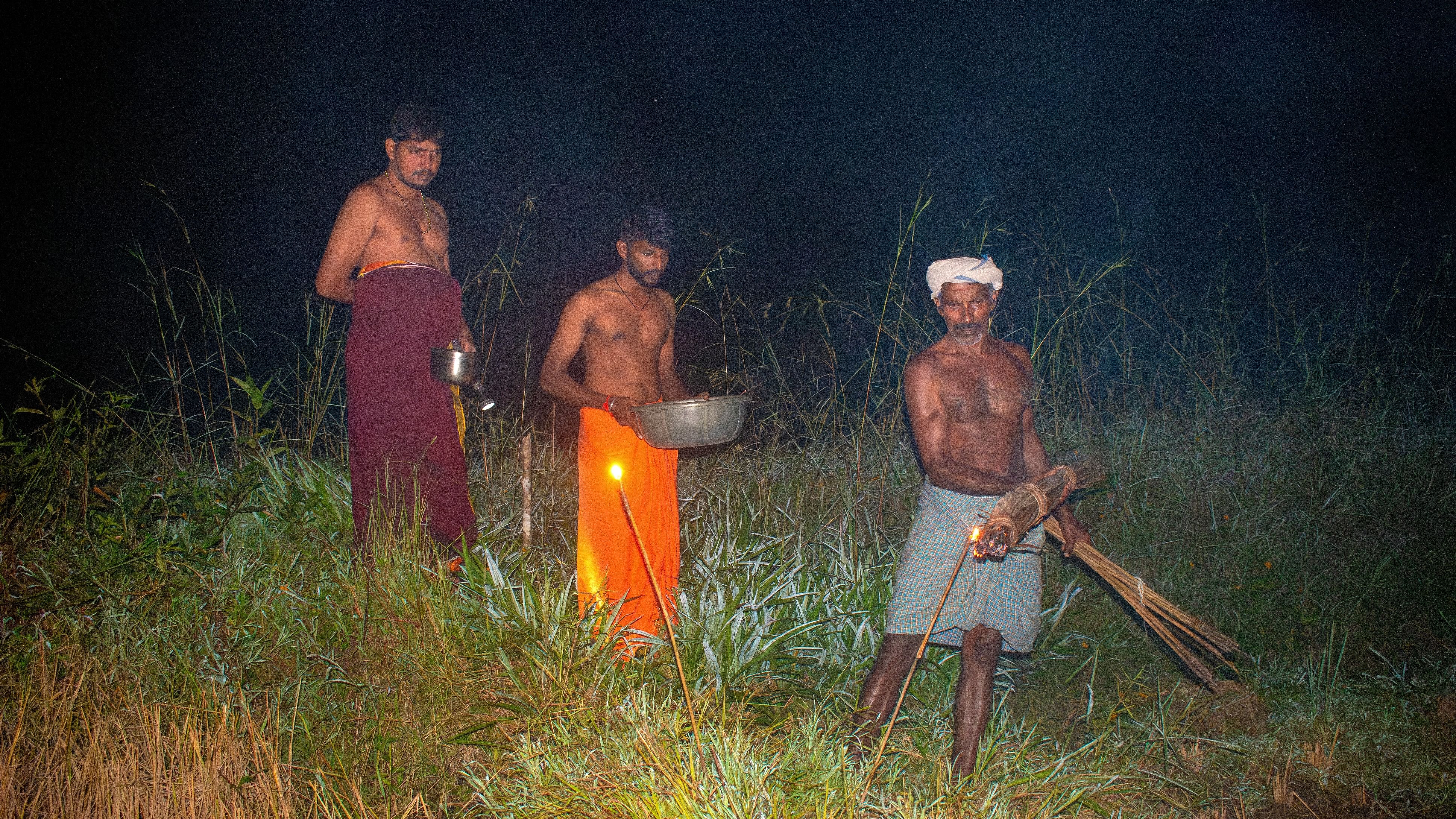
A Tulu family in Udupi district calling out to King Balendra on Balipadyami.
Credit: Photos by the author, Ashwini Jain
Deepavali, the festival of lights is a compendium of rituals celebrated rather meaningfully in different parts of the country. In the Tulu-speaking region of Karnataka, called Tulunadu, the agrarian populations have upheld a number of traditions that are rooted in the geographic and seasonal nuances of the land.
The ritual of calling out to Lord Balendra with a resonating ‘koo’ is one such fascinating practice. The story of King Balendra is connected to the lore of Lord Vishnu’s ten avatars. Balendra, an asura (demon) king ruled over an empire located amidst the seven seas named Jamboo Dweepa (which included Tulunadu) as a benevolent ruler.
Even though he belonged to the Asura clan, he was a just ruler. The King yearned for greater powers. According to Tulu folklore, Lord Vishnu took the form of Vaamana or a Brahmin, in order to stop him from performing a yajna which would have earned him invincibility. The familiar story of Vaamana’s three giant steps sending Balendra to the underworld (paatala) is the foundation of this ritual as well.
Balendra, even though cast away into the underworld, wished to see his subjects at least once a year and was granted that wish. It is this legend that motivates residents of Tulanadu to invite him to visit Tulunadu during Deepavali. In Kerala, similarly, he is invited during Onam.
The catch
However, there’s a catch. The asura king is invited to visit his subjects under some conditions. Residents of the village recite these conditions in phrases such as — “arrive here when a stone bull bellows, when a fruit grows atop a black rock and a flower blooms atop a white rock, when an old lady turns a bride” and so on. The recitation concludes with “and when all this happens, come to Tulunadu on a boat that has a hole in it.”
Shrikanth Shetty, an expert in Tulu heritage, says, “The ritual of calling out to Balendra is comically beautiful. Even though it is not really an invitation, it is still a form of reverence that conveys to him that he is still remembered and thanked, alongside all the forces of nature that sustain life in Tulunadu. The practises are extremely well connected to nature.” On Balipadyami, men and women walk into harvested fields with lanterns in hand and celebrate Deepavali under the new moon, calling out to the Lord of the land, who shall never really arrive.
The impossible conditions are recited rhythmically, followed by a hooting sound made by everyone at the location. The sound ‘koo’ is a regional way of calling out to someone at a distance, and it has been borrowed for the ritual.
The conditions used to invite Balendra are impossible to fulfil, which means he shall never really visit the land. The natives of the land do not want Balendra to visit his subjects. He was cast away by Vaamana for a reason, after all. Why, then, is the ritual performed at all?
Pastoral rituals
Calling out to Balendra during Balipadyami is part of a harvest ritual in Tulunadu. Deepavali arrives at a time when the agrarian cycle is almost complete for the year and the fresh harvest is stacked up at homes and granaries. The native populace practices a series of rituals to express gratitude towards the forces of nature that came together to make a good harvest possible during the year.
The series of rituals begins with calling out to Balendra, who is still overlooking Tulunadu from his place of exile. He is remembered and revered with specially made lamps lit on open fields. Soon after, the ancestors of the land are revered with a simple sweet made of beaten rice and a ritual named ‘agel balasuna’.
Third, the earth is worshipped with lamps lit on an open field, decorated with ritualistic herbs. Subsequently, the cattle and agricultural equipment are also offered for worship. These rituals, followed by Tulu families to date, distinguish Deepavali celebrations as unique.